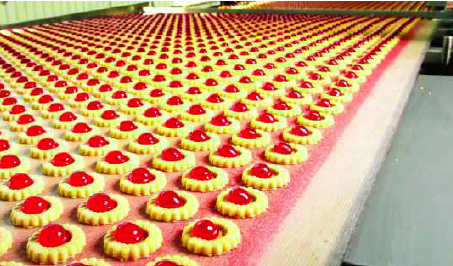We can do this the easy way or the hard way… That might sound like a rather dramatic way to introduce a talk about variances, but one recurring theme I’ve seen over the years is that students approach the section on variances with about as much enthusiasm as a visit to the dentist!
It doesn’t help that almost the first thing we are faced with is a big table of not exactly friendly formulae: AQ times, AP minus, AQ times, SP, and so on. Already we’re counting the minutes to coffee break – and hoping this won’t come up in the exam.
Fortunately, there is a much easier way that demands a lot less ‘learning’ at the cost of a bit more ‘thinking’ at the start.
Rather than painstakingly trying to rote learn all those formulae I find a better approach is to look past the detail and focus on what we are trying to achieve. We could say we are concentrating on the ‘why’ rather than the ‘how’. The trick in fact is to learn not the formulae but the simple plain English questions that underpin them.
This point is most easily illustrated by use of an example, and I find the more familiar the context the easier it is to form a clear mental picture of what it’s all about. Let’s therefore take a moment to think about cakes (mmm, cakes)… or rather the process of making them.
Simple examples are always the best to start with, so let’s say we make just one type of cake and our budget for the current month is to produce 12,000 cakes. The budget also tells us that we expect to use 6,000 kilos of cake mix and 1,200 hours of productive labour at a total cost of £24,000 for materials and £10,800 for labour.
We will also be given information about actual costs and quantities, but we’ll not worry about that for now as we have come already to the first of the questions we need to ask, which is: “What should the costs be to make one cake?” In other words, our first step in tackling a typical variances exercise should be to draw up a standard cost card.
Looking at the data, one cake should require:
| Material | 6,000 kilos / 12,000 cakes = | 0.5 kilos |
| Labour | 1,200 hours / 12,000 cakes = | 0.1 hours |
We also need to know the cost of each of these elements:
| Material | £24,000 / 6,000 kilos = | £4.00 per kilo |
| Labour | £10,800 / 1,200 hours = | £9.00 per hour |
One cake should therefore cost:
| Material | 0.5 x £4.00 = | £2.00 |
| Labour | 0.1 x £9.00 = | £0.90 |
| Total | ——- £2.90 |
Now we have a starting point against which we can measure, it’s time to look at the actual results, which are as follows:
| Cakes Produced | 13,200 | |
| Material Used | 6,700 kilos at a total cost of = | £25,460 |
| Labour Used | 1,380 hours at a total cost of = | £12,696 |
We’ll start by calculating the material price variance and the next question we ask is: “How much should this amount of material have cost?”
| From our cost card 6,700 kilos x £4.00 = | £26,800 |
| Compare with actual cost | £25,460 |
| Lower cost is good news therefore the variance is favourable | ——— £1,340 |
Next the material usage variance for which we ask: “How much material should we use for this many cakes?”
| From our cost card 13,200 cakes x 0.5 kilos = | 6,600 kilos |
| Actual usage | 6,700 kilos |
| More than standard is bad news therefore adverse | ————- 100 kilos |
| Multiply by standard price as we’ve dealt with the price variance already: | |
| 100 kilos x £4.00 = | £400 |
| adverse |
The labour rate variance is similar to the material price variance: “How much should this many hours cost?”
| From our cost card | 1,380 hours x £9.00 = | £12,420 |
| Actual cost | £12,696 | |
| More than standard therefore adverse | £276 |
Finally the labour efficiency variance which is very similar to the material usage variance: “How long should this many cakes take to make?”
| From our cost card | 13,200 cakes x 0.1 hours = | 1,320 hours |
| Actual time | 1,380 hours | |
| More than standard is again bad news therefore adverse | 60 hours |
| Multiply by standard rate as we’ve dealt with the rate variance already: | |
| 60 x £9.00 = | £540 |
| adverse |
As a precaution we should always check that our variances reconcile whether the questions asks for it or not:
| 13,200 cakes should cost | 13,200 x £2.90 = | £38,280 |
| Less favourable material price variance | (£1,340) | |
| Plus adverse material usage variance | £400 | |
| Plus adverse labour rate variance | £276 | |
| Plus adverse labour efficiency variance | £540 | |
| = Actual cost | ———- £38,156 | |
| Sure enough actual cost is | £25,460 + £12,696 = | £38,156 |
Note that adverse variances are added because they represent an increase over the standard cost whilst favourable variances are deducted. Note also that all budgeted figures are ‘flexed’ in line with the amount produced, not the budgeted level of output. One final thought: keep it simple and let your common sense guide you – and don’t forget to eat before the exam!
• Premier lecturer Jeff Grimston was recently awarded the Lifetime Achievement Award at the AAT Training Providers Awards




